Transcription of The Internal Working Models Concept: What Do …
1 Review of General Psychology Copyright 2000 by the Educational Publishing Foundation 2000, Vol. 4, No. 2, 155-175 1089-2680/00/$ DOI: The Internal Working Models concept : what Do We Really Know About the Self in Relation to Others? Paula R, Pietromonaco University of Massachusetts at Amherst Lisa Feldman Barrett Boston College The Internal Working Models concept is the foundation for understanding how attach- ment processes operate in adult relationships, yet many questions exist about the precise nature and structure of Working Models . To clarify the Working Models concept , the authors evaluate the empirical evidence relevant to the content, structure, operation, and stability of Working Models in adult relationships.
2 They also identify 4 theoretical issues that are critical for clarifying the properties of Working Models . These issues focus on the central role of affect and goals in Working Models , the degree to which Working Models are individual difference or relational variables, and the definition of attachment relationships and felt security in adulthood. Each individual builds Working Models of the world and of himself in it, with the aid of which he perceives events, forecasts the future, and constructs his plans. In the Working Models of the world that anyone builds a key feature is his notion of who his attachment figures are, where they may be found, and how they may be expected to respond. Similarly, in the Working model of the self that anyone builds a key feature is his notion of how acceptable or unacceptable he himself is in the eyes of his attachment figures.
3 (Bowlby, 1973, p, 203) Attachment theory (Bowlby, 1969, 1973, 1979, 1980) has profoundly influenced research and theorizing about the nature of human rela- tionships across the life span. The primary as- sumption of attachment theory is that humans form close emotional bonds in the interest of survival. These bonds facilitate the develop- ment and maintenance of mental representa- tions of the self and others, or " Internal Working Models ," that help individuals predict and un- derstand their environment, engage in survival- promoting behaviors such as proximity mainte- nance, and establish a psychological sense of The concept of attachment trajectory was developed in discussions with Wayne Bylsma and John Wall.
4 Preparation of this article was facilitated by National Science Founda- tion Grant 9727896. Correspondence concerning this article should be ad- dressed to Paula R. Pietromonaco, Department of Psychol- ogy, Tobin Hall, Box 37710, University of Massachusetts, Amherst, Massachusetts 01003-7710, or to Lisa Feldman Barrett, Department of Psychology, Boston College, 427 McGuinn Hall, Chestnut Hill, Massachusetts 01246. Elec- tronic mail may be sent to or "felt" security (cf. Bretherton, 1985; Sroufe & Waters, 1977). The Internal Working Models concept , as a mediator of attachment-related experience, is the cornerstone of attachment theory. Bowlby (1979) claimed that mental represen- tations of the self and others, formed in the context of the child-caregiver relationship, carry forward and influence thought, feeling, and behavior in adult relationships.
5 Further work (Hazan & Shaver, 1987) elaborated on this idea, highlighting the parallels between the child-caregiver relationship and the relation- ship between romantic partners. Since Hazan and Shaver' s article, a growing number of stud- ies have examined attachment patterns in adult relationships. Many of these studies have at- tempted to examine aspects of Internal Working Models , the hypothesized mechanism through which attachment behaviors are transferred to different relationship partners throughout the life span. Although the Working Models concept is the foundation for understanding how attach- ment processes operate throughout the life course, many unanswered questions about the nature and structure of Working Models remain.
6 The purpose of this article is to evaluate exactly what is known about the Working Models con- cept in attachment between adults and to iden- tify critical areas that remain to be clarified. Although our focus is on the Working Models concept as it functions in adult relationships, we draw on the literature examining children's Working Models when appropriate. 155 156 PIETROMONACO AND FELDMAN BARRETI' The Internal Working Models concept A central tenet of attachment theory (Bowlby, 1969, 1973) is that people develop mental rep- resentations, or Internal Working Models , that consist of expectations about the self, signifi- cant others, and the relationship between the two. Working Models are thought to include specific content about attachment figures and the self that is stored within a well-organized representational structure (Bowlby, 1980; Bretherton, 1985, 1990; Collins & Read, 1994).
7 Furthermore, their content is believed to include knowledge about the details ( , what hap- pened, where, and with whom) of interpersonal experiences as well as the affect ( , happi- ness, fear, and anger) associated with those ex- periences (Bretherton, 1985). Working Models also are assumed to involve processes that in- fluence what information individuals attend to, how they interpret events in their world, and what they remember. Furthermore, these pro- cesses are hypothesized to operate primarily outside of conscious awareness (Bowlby, 1980; Bretherton, 1985, 1990; Main, Kaplan, & Cas- sidy, 1985). Because they work on the principle of assimilation, directing both attention and be- havior, Working Models tend to remain stable over time, although they may change under some conditions (Bowlby, 1973).
8 In the sec- tions to follow, we elaborate on these assump- tions and evaluate the evidence relevant to Working Models . Content of Working Models Theory. Bowlby (1973) proposed that peo- ple hold Working Models of the self and others, and other theorists have elaborated on this idea (Bartholomew, 1990; Bartholomew & Horo- witz, 1991). Working Models of self are thought to arise as individuals interact with close others (Cooley, 1902; Markus & Cross, 1990; Mead, 1934). In particular, they are believed to derive from beliefs about how acceptable the self is in the eyes of early attachment figures, as gauged from the responsiveness of those figures. Chil- dren who have attachment figures who are readily available, responsive, and reliable are assumed to develop a representation of the self as acceptable and worthwhile.
9 Those who have inconsistent or unresponsive attachment figures are assumed to develop a view of self as unac- ceptable and unworthy (for a review, see Cassidy, 2000). Working Models of others are hypothesized to include expectations about who will serve as attachment figures ( , whom to turn to when in need of security), how accessi- ble those figures are, and principally about how they will respond when needed (Main et al., 1985). Attachment styles. People show different attachment styles that reflect their different in- terpersonal experiences. Work focusing on par- ent-child attachment (see Ainsworth, Blehar, Waters, & Wall, 1978) has documented differ- ent patterns of behavioral responses from chil- dren who are separated and then reunited with their mothers.
10 These behavioral patterns are thought to stem from different underlying work- ing Models of the self and others. Young chil- dren who willingly approach their mother after the separation and are easily comforted are as- sumed to hold Working Models that reflect se- curity. Those who resist contact with their mothers after a brief separation are assumed to hold Working Models that reflect an avoidant form of insecurity. Those who also display an- ger by pushing their mother away and are dif- ficult to comfort after a brief separation are assumed to hold Working Models that indicate an anxious-ambivalent form of insecurity. In their pioneering efforts, Hazan and Shaver (1987) investigated attachment patterns in adults that corresponded conceptually to the descriptions of children's attachment behavior patterns.
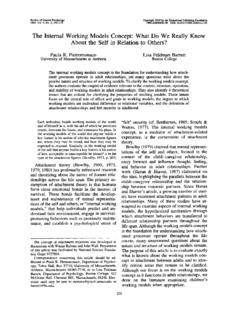


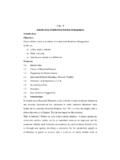

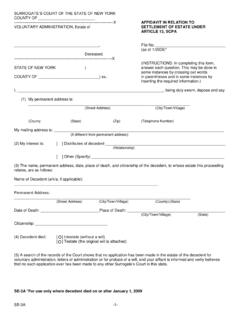
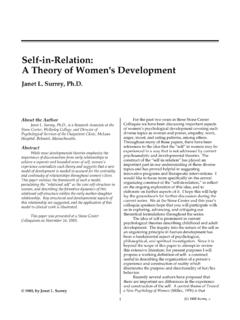
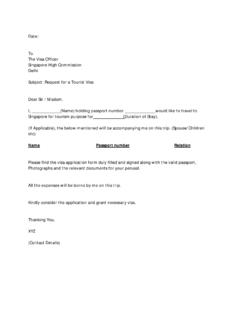
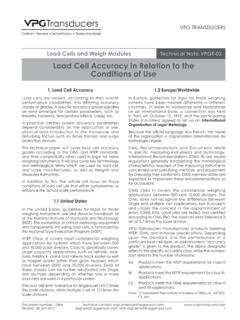
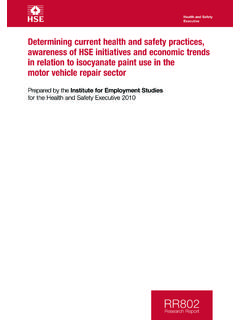
![[Title]: Traditional Ecological Knowledge - Silva For](/cache/preview/3/7/5/d/5/1/2/0/thumb-375d512018e32de09e9c7f6503e5fcc5.jpg)